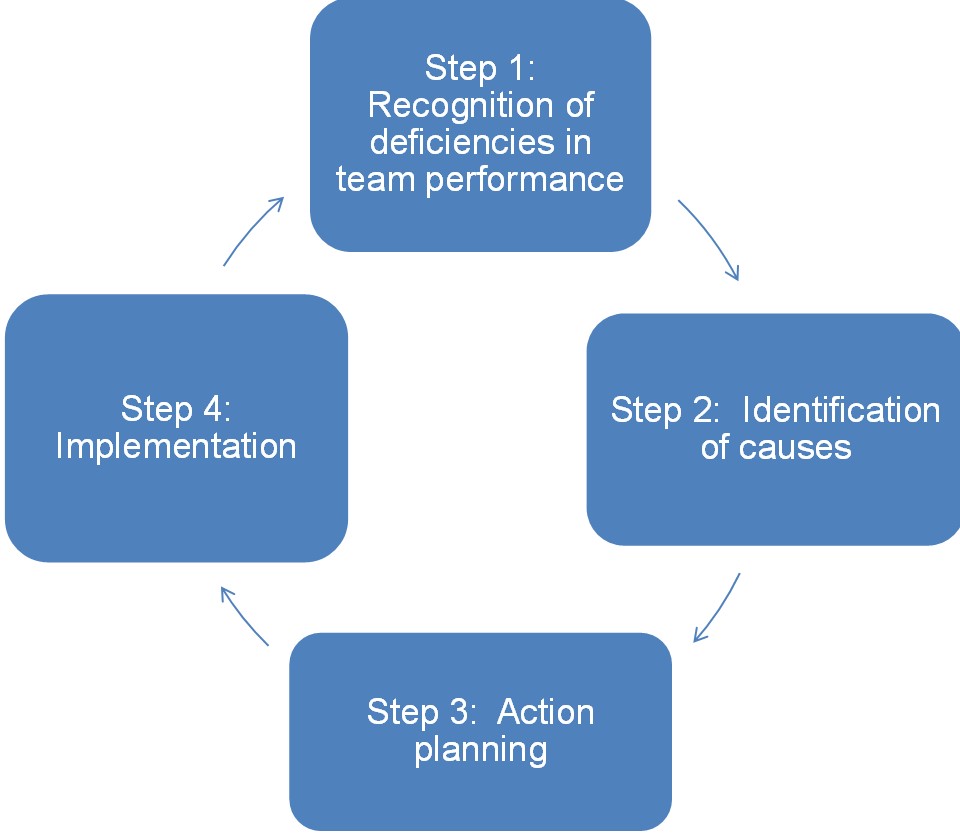Team building is essential if you are facing the following problems:
- Loss of productivity or output
- Constant complaining
- Conflict between employees
- Lack of clear goals
- Confusion about assignments
- Lack of innovation or risk taking
- Ineffective meetings
- Lack of initiative
- Poor communication
- Lack of trust
- Employees feel that their work is not recognised
- Decisions are made that people do not understand or agree with
According to Szumal (2001), building teams is a four-step process that enables team members to identify and apply the problem-solving process to resolve internal problems related to their team’s inability to perform.

Team building is initiated when members recognise deficiencies in their team’s performance (step 1). Recognition of performance deficiencies is the “wake-up call” that drives a team’s search for underlying causes (step 2). There are a variety of methods that teams can use to gather information about underlying causes, including group process surveys, team member reviews or observation of team meetings. Such information will usually indicate that performance deficiencies are due to weaknesses in at least one of four areas: problem solving skills, interpersonal skills, goal setting and member roles.
Several tactics, techniques and tools for improving internal processes can be considered by teams as they begin action planning (step 3), including goal setting, role negotiation and clarification, training in critical skills and ongoing evaluation and feedback of the team’s processes.
As the team implement their action plans (step 4), they should monitor their performance and identify deficiencies that signal the need for further team building.